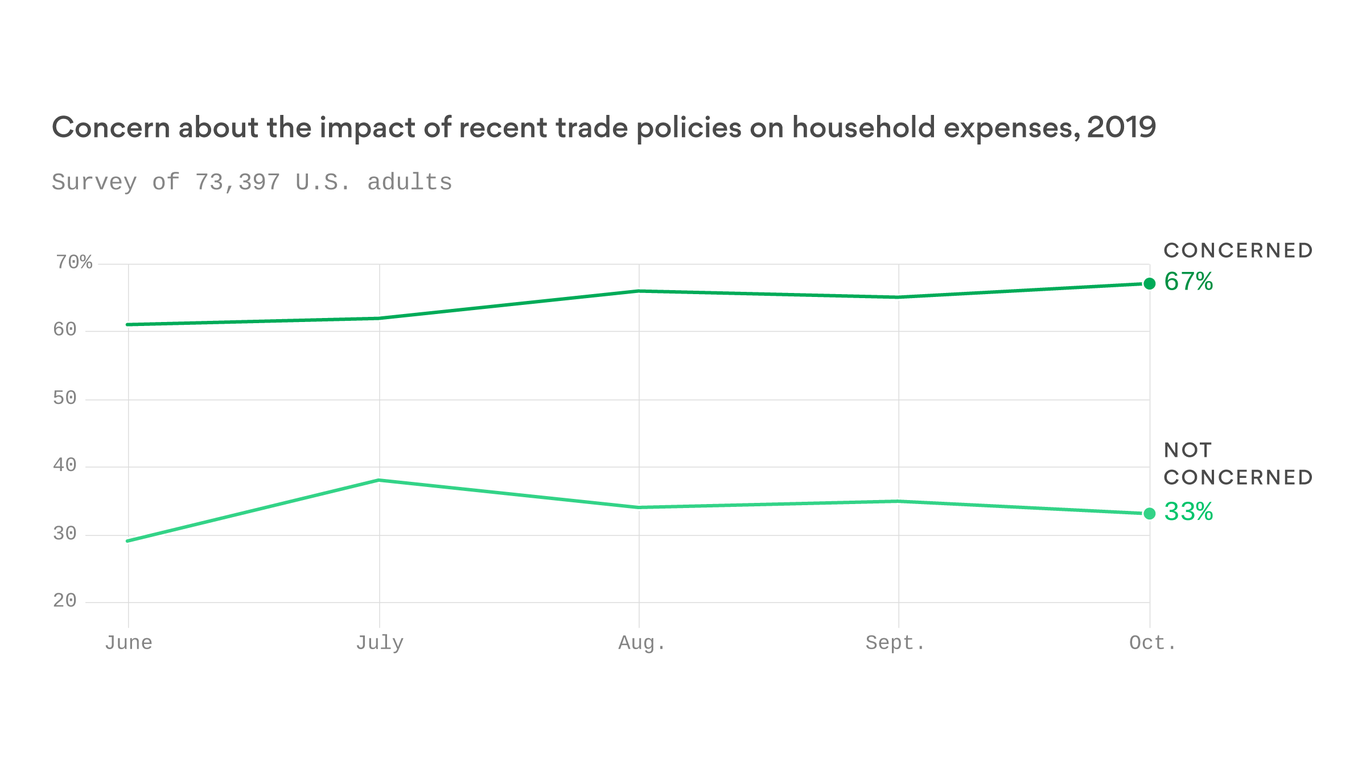Analyzing The Effects Of U.S.-China Tariff Rollbacks On The American Economy

Table of Contents
Impact on Inflation and Consumer Prices
Tariff rollbacks directly lower the cost of imported goods from China, potentially easing inflationary pressures and boosting consumer spending.
Reduced Import Prices
The reduction in tariffs translates to lower import prices for a wide range of goods. This includes:
- Electronics: Smartphones, laptops, and other consumer electronics. Price reductions are already being observed in several product categories.
- Furniture: Many furniture items are sourced from China, and the tariff rollback could lead to more affordable options for consumers. Early data suggests a modest reduction in furniture prices.
- Clothing and Apparel: A significant portion of clothing is imported from China; the tariff rollback is expected to contribute to lower clothing costs. While the effect may not be immediate, it's expected to be noticeable in the coming months.
The extent to which these price reductions are passed on to consumers (the "pass-through effect") remains a crucial factor. While some retailers may absorb some of the savings to improve their margins, competition should force many to pass on the benefits to consumers, increasing purchasing power.
Impact on Consumer Spending
Lower prices lead to increased purchasing power, potentially stimulating consumer demand.
- Consumer Confidence Indices: We expect to see an increase in consumer confidence indices following the tariff rollbacks, reflecting greater optimism about personal finances. This should correlate with a rise in spending.
- Discretionary Spending: Consumers may allocate more of their income to discretionary spending – entertainment, travel, and dining out – leading to increased economic activity.
However, the overall impact on inflation is complex. While lower import prices contribute to decreased inflation, other factors, such as energy costs and supply chain disruptions, could still exert upward pressure. The net effect will depend on the interplay of these various forces.
Effects on Business Investment and Supply Chains
The U.S.-China tariff rollbacks have significantly positive effects on business investment and supply chain stability.
Restored Supply Chain Stability
The uncertainty associated with tariffs created significant disruptions in supply chains. Rollbacks reduce this uncertainty, leading to:
- Improved Lead Times: Businesses can now rely on more predictable delivery times from Chinese suppliers, reducing production delays and inventory management challenges.
- Industries Impacted: The technology and automotive sectors, heavily reliant on Chinese components, will experience particularly positive impacts. Improved lead times will allow for more efficient production planning and reduced stock-outs.
This improved stability encourages business investment. With reduced risk associated with supply chain disruptions, companies are more likely to invest in expansion, equipment upgrades, and innovation.
Impact on Manufacturing and Job Creation
Reduced input costs can boost manufacturing competitiveness and potentially stimulate job creation.
- Manufacturing Sector Growth: While the extent of growth remains to be seen, indicators suggest a potential uptick in manufacturing activity in response to lower input costs.
- Job Creation in Specific Sectors: Increased production and competitiveness could result in job creation, particularly in sectors directly benefiting from the tariff reductions.
However, the impact on job creation might be limited by ongoing automation trends. While lower costs might increase production volumes, companies may opt for automation over hiring additional workers.
Overall Impact on Economic Growth
The U.S.-China tariff rollbacks exert significant influence on the broader economic landscape.
GDP Growth and Economic Output
The reduction in import prices, increased consumer spending, and greater business investment should positively influence Gross Domestic Product (GDP) growth.
- Economic Growth Data: Analysis of economic data post-rollback will reveal the extent of this positive impact, comparing it with pre-rollback figures and established forecasts.
- Multiplier Effect: The initial reduction in import prices has a multiplier effect, creating a ripple effect throughout the economy, as businesses and consumers respond to these lower costs.
However, predicting the precise effect on GDP growth requires careful monitoring and analysis of various economic indicators.
Long-Term Economic Implications
While the immediate effects of the tariff rollbacks appear positive, the long-term implications require continued attention.
- U.S.-China Relations: The ongoing relationship between the US and China will significantly affect the trajectory of future trade policies. Any resurgence of trade tensions could easily reverse some of the positive impacts seen.
- Unforeseen Consequences: It's crucial to recognize the potential for unforeseen consequences. Changes in global supply chains are complex and the full impact may not be apparent for some time.
The long-term sustainability of this improved trade relationship and its overall impact on economic stability remain crucial aspects to monitor.
Conclusion
This analysis demonstrates the complex and multifaceted impacts of U.S.-China tariff rollbacks on the American economy. While reduced import prices contribute to lower inflation and potentially stimulate consumer spending and business investment, the long-term effects remain to be fully observed. The restored stability in supply chains is a significant positive, although the overall impact on job creation might be less pronounced than initially anticipated.
Further research and ongoing monitoring of economic indicators are crucial to fully understand the lasting consequences of these U.S.-China tariff rollbacks on the American economy. Continued analysis of the interplay between trade policy, inflation, and economic growth will be essential for informing future trade negotiations and strategic economic decision-making. Stay informed about the evolving landscape of U.S.-China trade relations and their impact on your business and the broader American economy. The effects of U.S.-China tariff rollbacks continue to unfold, requiring diligent observation and analysis to fully grasp their impact.

Featured Posts
-
 Eva Longorias New Hairstyle Sun Kissed Highlights And A Stunning Transformation
May 13, 2025
Eva Longorias New Hairstyle Sun Kissed Highlights And A Stunning Transformation
May 13, 2025 -
 Eva Longorias Strapless Michael Kors Look For Disney Film Promotion
May 13, 2025
Eva Longorias Strapless Michael Kors Look For Disney Film Promotion
May 13, 2025 -
 Pregnant Cassie Shares Third Childs Gender With Alex Fine
May 13, 2025
Pregnant Cassie Shares Third Childs Gender With Alex Fine
May 13, 2025 -
 Luchshie Filmy Dzherarda Batlera Subyektivniy Reyting
May 13, 2025
Luchshie Filmy Dzherarda Batlera Subyektivniy Reyting
May 13, 2025 -
 Spoment Na Dzherard Btlr Za Blgariya Koyto Zavladya Mrezhata
May 13, 2025
Spoment Na Dzherard Btlr Za Blgariya Koyto Zavladya Mrezhata
May 13, 2025
